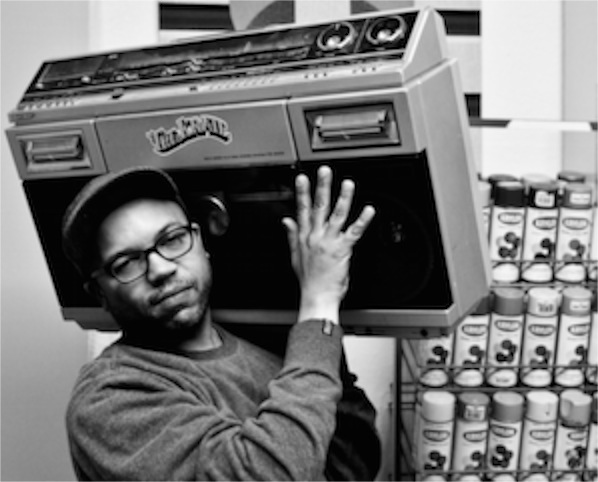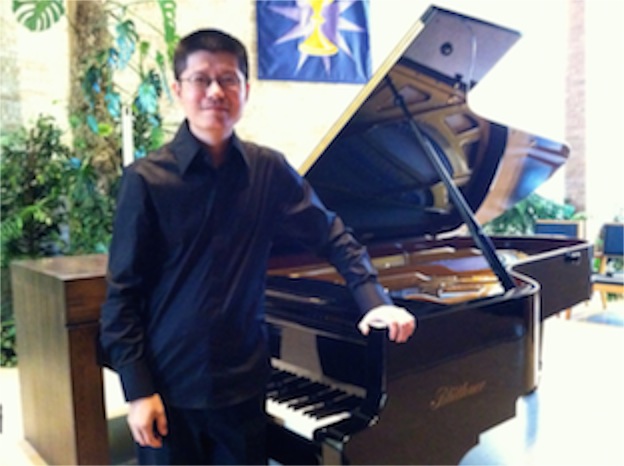Live music
15/10/12 05:18
I drove school bus for a few years when I was serving my first parish. I only drove a regular route for a few months one year. Most of the time I was a substitute driver and drove the high school activities bus, going to ball games and transporting students on field trips. The driver has more assistance on the activities bus. Coaches and chaperones help to enforce rules. On a regular route, the driver is responsible for keeping the kids in line. Each driver has a little bit different tolerance for the sound level on the bus. Those were the days of “boom boxes.” The portable stereos were battery powered and often had powerful speakers. Some drivers simply didn’t allow the music to be played on the bus. Others provided music from the bus radio, which usually wasn’t very high quality sound, but had only one volume control and the driver was the only one who could access it. I would turn on the bus radio when asked by students. I found that I could control the general noise level in the bus with the volume control. When I turned down the radio, students who wanted to listen would “shush” the other students so they could hear.
I remember clearly the first time I experienced a “walkman.” It is likely that the device was an imitation and not the Sony original, but it played cassette tapes through a set of wired headphones. The device was relatively expensive at the time. Not every student had one. The first one I saw was brought onto the bus by a student who sat next to one of the biggest players on the football team. They shared the device, with each using one of the ear buds of the headphones. The football player insisted that the rest of the bus be quiet so he could hear. It was an amazingly quiet and wonderful drive.
I joke about it now, but it was an amazing experience to live through two major transitions in personal music. The first transition was the advent of portable music devices. I don’t think that we had any battery-powered music devices in our home when I was growing up. My father was a dedicated builder of “Heathkit” stereo components, so we had a fairly fancy stereo in our living room that played records. My sisters had a small record player that I’m sure was labeled “portable,” but it needed to be plugged into an outlet to play. When I was older, there were transistor radios that ran on batteries and though their sound was less than ideal, music became portable. I lost a portable radio once when it was confiscated for being wired into the school pa system. We did, however, get to listen to listen to more than three innings of a World Series game between the St. Louis Cardinals and the Boston Red Socks before school officials found out why the game was being piped throughout the school. At the time it seemed worth the sacrifice, even though we all knew that the Red Socks probably wouldn’t win. The series did go a full seven games that year, though.
 Boom Boxes, as I remember them, came in with the invention of the cassette tape. The tapes were tiny, would hold an hour or more of music, and could be recorded by amateurs, with a mix of different songs by different artists. We recorded tapes off of the radio. I wasn’t much into stereo equipment at the time, though we had a fairly nice home set early in our marriage. Meanwhile, the “boom boxes” got bigger and bigger and louder and louder. When we lived in Chicago, we could often hear the boom box before we saw the youth carrying it. It took a substantial young person to carry some of the really big stereo units. They would set them down on a street corner and gather a crowd to listen and dance.
Boom Boxes, as I remember them, came in with the invention of the cassette tape. The tapes were tiny, would hold an hour or more of music, and could be recorded by amateurs, with a mix of different songs by different artists. We recorded tapes off of the radio. I wasn’t much into stereo equipment at the time, though we had a fairly nice home set early in our marriage. Meanwhile, the “boom boxes” got bigger and bigger and louder and louder. When we lived in Chicago, we could often hear the boom box before we saw the youth carrying it. It took a substantial young person to carry some of the really big stereo units. They would set them down on a street corner and gather a crowd to listen and dance.
The personal stereo changed a lot in a short amount of time. A few years later, we had moved out of the city and students began to listen to their music privately through headphones. From cassettes, the industry transitioned to CD’s. Both of our children went through several different personal CD players over the years. I got pretty good at replacing the ends of the headphone wires when they were damaged, but we still bought more sets of headphones than players.
These days there are a lot of people connected to MP3 players. More and more these players are not devices dedicated to music only, but are also telephones. There are telephones available that will hold thousands of songs. Some youth have their entire music library on their iPod or phone.
Music listening has become a very personal experience. A school bus these days has nearly as many different songs as there are youth on the bus. Each one is carrying his or her personal soundtrack.
 So I treasure the experiences of live music. It is vastly different than recorded music. Yesterday we sat transfixed as Tao Lin worked his skill and artistry on our congregation’s Buthner concert piano. The entire audience would go silent as his hands hovered over the keys and the final audible tones of sustain rang throughout the room. We marveled at his power and accuracy and the dynamic variations. He played without written music in front of him. There was a deep sense in the room that we all had shared a single experience. I know that there were moments when the majority of the audience was breathing in time to the phrases of the music.
So I treasure the experiences of live music. It is vastly different than recorded music. Yesterday we sat transfixed as Tao Lin worked his skill and artistry on our congregation’s Buthner concert piano. The entire audience would go silent as his hands hovered over the keys and the final audible tones of sustain rang throughout the room. We marveled at his power and accuracy and the dynamic variations. He played without written music in front of him. There was a deep sense in the room that we all had shared a single experience. I know that there were moments when the majority of the audience was breathing in time to the phrases of the music.
There is no recording device that could capture the experience we shared. I went away from the concert with one of Tao Lin’s CD’s. I’ll probably transfer the sounds to my MP3 player. I have recordings of Perce Kagari Emata and Jim Szana that were made in our sanctuary on our piano. But the recordings are not at all the experience of sharing live music with an audience.
There is no technology yet invented that can reproduce the joys of sharing live music with our neighbors. Quite frankly, I like it this way. There is no way I would trade being in the room for a pair of earbuds.
I remember clearly the first time I experienced a “walkman.” It is likely that the device was an imitation and not the Sony original, but it played cassette tapes through a set of wired headphones. The device was relatively expensive at the time. Not every student had one. The first one I saw was brought onto the bus by a student who sat next to one of the biggest players on the football team. They shared the device, with each using one of the ear buds of the headphones. The football player insisted that the rest of the bus be quiet so he could hear. It was an amazingly quiet and wonderful drive.
I joke about it now, but it was an amazing experience to live through two major transitions in personal music. The first transition was the advent of portable music devices. I don’t think that we had any battery-powered music devices in our home when I was growing up. My father was a dedicated builder of “Heathkit” stereo components, so we had a fairly fancy stereo in our living room that played records. My sisters had a small record player that I’m sure was labeled “portable,” but it needed to be plugged into an outlet to play. When I was older, there were transistor radios that ran on batteries and though their sound was less than ideal, music became portable. I lost a portable radio once when it was confiscated for being wired into the school pa system. We did, however, get to listen to listen to more than three innings of a World Series game between the St. Louis Cardinals and the Boston Red Socks before school officials found out why the game was being piped throughout the school. At the time it seemed worth the sacrifice, even though we all knew that the Red Socks probably wouldn’t win. The series did go a full seven games that year, though.

The personal stereo changed a lot in a short amount of time. A few years later, we had moved out of the city and students began to listen to their music privately through headphones. From cassettes, the industry transitioned to CD’s. Both of our children went through several different personal CD players over the years. I got pretty good at replacing the ends of the headphone wires when they were damaged, but we still bought more sets of headphones than players.
These days there are a lot of people connected to MP3 players. More and more these players are not devices dedicated to music only, but are also telephones. There are telephones available that will hold thousands of songs. Some youth have their entire music library on their iPod or phone.
Music listening has become a very personal experience. A school bus these days has nearly as many different songs as there are youth on the bus. Each one is carrying his or her personal soundtrack.

There is no recording device that could capture the experience we shared. I went away from the concert with one of Tao Lin’s CD’s. I’ll probably transfer the sounds to my MP3 player. I have recordings of Perce Kagari Emata and Jim Szana that were made in our sanctuary on our piano. But the recordings are not at all the experience of sharing live music with an audience.
There is no technology yet invented that can reproduce the joys of sharing live music with our neighbors. Quite frankly, I like it this way. There is no way I would trade being in the room for a pair of earbuds.